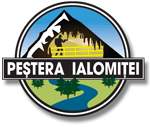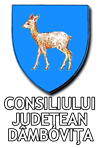“At the bottom of Valea Ialomitei, not far from its first beginnings, carved into a rocky wall, higher than 100 m, and in the middle of a wild, humid and dark gorge, crossed by the noisy valley like a storm, there lies the famous and extensively researched Pestera Ialomitei, one of the most important excavations from the Southern Carpathians”. This is how Mihai Haret located the cave in 1924, in his book “Pestera Ialomitei si Casa Pestera” [translator’s note: “Ialomita’s Cave and the Cave Home”]. “Situated at the very geometrical centre of the Bucegi Mountains”, he further says, “at a great crossroads and at an altitude rising gradually from 1,600 to 2.000 m, the region of the cave – through the richness of geological horizons, splendid monuments of nature, astutely scattered around the valley – through the harmony of its interesting shapes and landscapes, as well as its impressive position, has always been the object of public’s admiration and the attraction of scientists”.
Pestera Ialomitei is situated in Moroeni, Dâmbovita county, on the right flank of Cheile Ialomitei [translator’s note: Ialomita’s Gorge], at an altitude of 1,660 m, carved in the Jurassic chalkstones of the Batrâna Mountain.
Its name comes from Ialomita river, springing 10 km away from the glacier cirque called Obârsia Ialomitei, located below Vârful Gavanele [translator’s note: Gavanele Peak] (2,479 m), found 600 m away from Vârful Omu and at a smaller distance from Vârful Ocolit [translator’s note: Ocolit Peak], also called Bucura Dumbrava.
According to some authors, these three peaks form the Triple Pillar of Heavens, mentioned by the ancients and considered by researcher Cristina Panculescu to be the most important natural Informational Energetic Centre of the planet: “The centre of the world where heaven is connected to earth, where the Gate of Exit from the terrestrial massif is located, where the Tree of Life is growing”.
The particular charge of these places drew both Dacians and the first Christians, the monks, on their quest for solitude and a place of worship away from the madding world.
They say that Apostle Andrei was also lodged by Pestera Ialomitei; he was one of the twelve apostles of Jesus Christ, the one sent to Christianise Romania.
Also here lived the hermits, Romania’s genuine anchorites, as early as the 15th century. Passing by, Mihnea Voda, the king of Wallachia, built a wooden hermitage in the first half of the 16th century. The wooden hermitage was right at the entrance into the cave, in the grotto called “Mihnea Voda”. Here old monks were placed to hold the service. As the building was made out of fir tree timbers coated by shingles from top to bottom, the hermitage built by Mihnea burnt down. No mention of this hermitage is made until the latter half of the 18th century. A manuscript dated 1752 and found in the State archives mentions that “a hermitage from Pestera Padina, Strungii Dâmbovita/Ialomita, was rented to the Mitropoly by Iacov Ieromonahul [translator’s note: Hieromonk Jacob]”. In 1793, I. Kleinlantz mentioned the cave which “has a chapel where a monk and a few anchorites have been living here away from the world”.
More news about the hermitage date from the 19th century: we find out that it burnt down completely in 1818, and a new one was built in 1819, closer by approximately 10 m to the entrance into the cave. In witness of the hermitage construction from 1819 there is a writing inscribed on the Southern wall of the cave, at an approximate height of 15 m. It says: “This hermitage was made by Popa Gheorghe, Ion Baltag and Hieromonk Gherontie – there is another line and a half erased by rainwater - 1819”. Below this writing, on the left side, there is another record: “Since I served in Schitul Pestera, at 1861, Ieronim Ieromonahul, with a lot of loathing, for my sins”.
In 1940, the hermitage was once again burnt down, to be remade between 1940 and 1942 by Hieromonk Mihail Badila. On April 20, 1961, when a fire started at the cells found at the entrance into the case, the hermitage was completely burnt down. It was remade only in 1993. Since 1957, the hermitage was owned by the Sinaia Monastery. In 1991, it was transferred into the canonical jurisdiction of the Archdiocese of Târgoviste.
An inscription on the stone cross found in front of the Pestera Ialomitei Monastery goes as follows: “This Holy Cross was made with the blessing of His Holiness Justinian – the Patriarch of the Romanian Orthodox Church- on the spot where stood the chancel table of the church of the Pestera Hermitage from Obârsia Ialomitei, founded, according to tradition, by the King of Wallachia Mihnea cel Rau [translator’s note: Mihnea the Evil] between 1508 and 1510 and burnt by fire for a fourth time on April 20, 1961. This Holy Church, whose patrons are St. Apostles Peter and Paul, was built between 1993 and 1996, during the rule of His Holiness Teoctist, the Patriarch of Romania, serving Prior being Very Reverend Protosinghel Maxim Badoiu. The Holy Place of Worship was painted by Mircea and Maria Petrisor”.
This wonderful hermitage is placed there particularly to receive the light necessary to enter into the secrets of the darkness. Once you received the blessing, miracles present themselves one by one in front of your eyes. The thrills of the unknown make you feel restless, you enter into an unknown life, the subterranean life, full of darkness and mystery. Yet, this is exactly what fascinates you and you cannot escape the curiosity you feel for knowing the life under the ground. Nature is magnificent! And how it makes you vibrate when you see the impressively laced and shining sculptures! Who is the craftsman who was able to create such jewellery? Water! It has been working for thousands of years on its wonderful masterpiece, and every time such masterpiece is unique!
Pestera Ialomitei has an accrued development of 1,128 m; only 450 m are accessible and arranged for visiting. The entrance faces the East, and the semi-elliptical shaped cave mouth is 20 m high and 16 m wide. The temperature in the cave ranges from 4 to 6 degrees. Humidity is relatively high, between 85 and 100%. “At the bottom of Valea Ialomitei, not far from its first beginnings, carved into a rocky wall, higher than 100 m, and in the middle of a wild, humid and dark gorge, crossed by the noisy valley like a storm, there lies the famous and extensively researched Pestera Ialomitei, one of the most important excavations from the Southern Carpathians”. This is how Mihai Haret located the cave in 1924, in his book “Pestera Ialomitei si Casa Pestera” [translator’s note: “Ialomita’s Cave and the Cave Home”]. “Situated at the very geometrical centre of the Bucegi Mountains”, he further says, “at a great crossroads and at an altitude rising gradually from 1,600 to 2.000 m, the region of the cave – through the richness of geological horizons, splendid monuments of nature, astutely scattered around the valley – through the harmony of its interesting shapes and landscapes, as well as its impressive position, has always been the object of public’s admiration and the attraction of scientists”.
Pestera Ialomitei is situated in Moroeni, Dâmbovita county, on the right flank of Cheile Ialomitei [translator’s note: Ialomita’s Gorge], at an altitude of 1,660 m, carved in the Jurassic chalkstones of the Batrâna Mountain.
Its name comes from Ialomita river, springing 10 km away from the glacier cirque called Obârsia Ialomitei, located below Vârful Gavanele [translator’s note: Gavanele Peak] (2,479 m), found 600 m away from Vârful Omu and at a smaller distance from Vârful Ocolit [translator’s note: Ocolit Peak], also called Bucura Dumbrava.
According to some authors, these three peaks form the Triple Pillar of Heavens, mentioned by the ancients and considered by researcher Cristina Panculescu to be the most important natural Informational Energetic Centre of the planet: “The centre of the world where heaven is connected to earth, where the Gate of Exit from the terrestrial massif is located, where the Tree of Life is growing”.
The particular charge of these places drew both Dacians and the first Christians, the monks, on their quest for solitude and a place of worship away from the madding world.
They say that Apostle Andrei was also lodged by Pestera Ialomitei; he was one of the twelve apostles of Jesus Christ, the one sent to Christianise Romania.
Also here lived the hermits, Romania’s genuine anchorites, as early as the 15th century. Passing by, Mihnea Voda, the king of Wallachia, built a wooden hermitage in the first half of the 16th century. The wooden hermitage was right at the entrance into the cave, in the grotto called “Mihnea Voda”. Here old monks were placed to hold the service. As the building was made out of fir tree timbers coated by shingles from top to bottom, the hermitage built by Mihnea burnt down. No mention of this hermitage is made until the latter half of the 18th century. A manuscript dated 1752 and found in the State archives mentions that “a hermitage from Pestera Padina, Strungii Dâmbovita/Ialomita, was rented to the Mitropoly by Iacov Ieromonahul [translator’s note: Hieromonk Jacob]”. In 1793, I. Kleinlantz mentioned the cave which “has a chapel where a monk and a few anchorites have been living here away from the world”.
More news about the hermitage date from the 19th century: we find out that it burnt down completely in 1818, and a new one was built in 1819, closer by approximately 10 m to the entrance into the cave. In witness of the hermitage construction from 1819 there is a writing inscribed on the Southern wall of the cave, at an approximate height of 15 m. It says: “This hermitage was made by Popa Gheorghe, Ion Baltag and Hieromonk Gherontie – there is another line and a half erased by rainwater - 1819”. Below this writing, on the left side, there is another record: “Since I served in Schitul Pestera, at 1861, Ieronim Ieromonahul, with a lot of loathing, for my sins”.
In 1940, the hermitage was once again burnt down, to be remade between 1940 and 1942 by Hieromonk Mihail Badila. On April 20, 1961, when a fire started at the cells found at the entrance into the case, the hermitage was completely burnt down. It was remade only in 1993. Since 1957, the hermitage was owned by the Sinaia Monastery. In 1991, it was transferred into the canonical jurisdiction of the Archdiocese of Târgoviste.
An inscription on the stone cross found in front of the Pestera Ialomitei Monastery goes as follows: “This Holy Cross was made with the blessing of His Holiness Justinian – the Patriarch of the Romanian Orthodox Church- on the spot where stood the chancel table of the church of the Pestera Hermitage from Obârsia Ialomitei, founded, according to tradition, by the King of Wallachia Mihnea cel Rau [translator’s note: Mihnea the Evil] between 1508 and 1510 and burnt by fire for a fourth time on April 20, 1961. This Holy Church, whose patrons are St. Apostles Peter and Paul, was built between 1993 and 1996, during the rule of His Holiness Teoctist, the Patriarch of Romania, serving Prior being Very Reverend Protosinghel Maxim Badoiu. The Holy Place of Worship was painted by Mircea and Maria Petrisor”.
This wonderful hermitage is placed there particularly to receive the light necessary to enter into the secrets of the darkness. Once you received the blessing, miracles present themselves one by one in front of your eyes. The thrills of the unknown make you feel restless, you enter into an unknown life, the subterranean life, full of darkness and mystery. Yet, this is exactly what fascinates you and you cannot escape the curiosity you feel for knowing the life under the ground. Nature is magnificent! And how it makes you vibrate when you see the impressively laced and shining sculptures! Who is the craftsman who was able to create such jewellery? Water! It has been working for thousands of years on its wonderful masterpiece, and every time such masterpiece is unique!
Pestera Ialomitei has an accrued development of 1,128 m; only 450 m are accessible and arranged for visiting. The entrance faces the East, and the semi-elliptical shaped cave mouth is 20 m high and 16 m wide. The temperature in the cave ranges from 4 to 6 degrees. Humidity is relatively high, between 85 and 100%.






